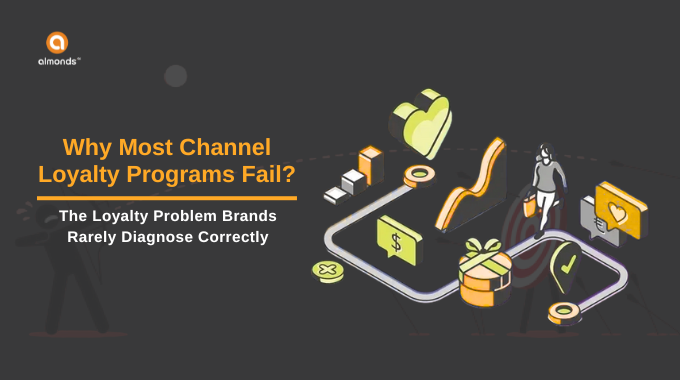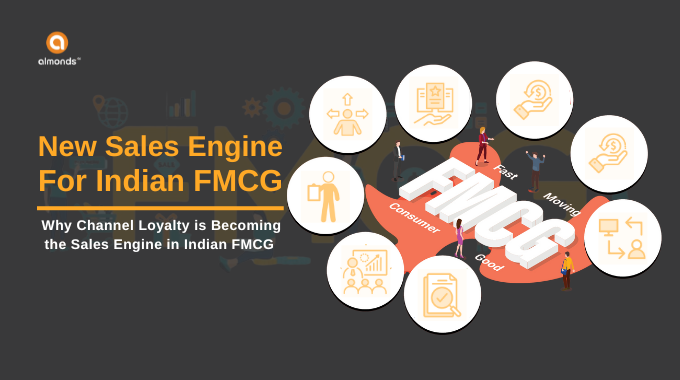In today’s world, sustainability is a crucial consideration for businesses across all sectors. Green Loyalty Programs have emerged as an effective tool to encourage environmentally responsible practices in the B2B market.
This blog post will explore the need for such programs, their elements, key measurement parameters for sustainability, and insights on implementing a successful Green Loyalty Program in a B2B business model.
The Need for Green Loyalty Programs
The B2B market holds immense potential for driving sustainable practices. Green Loyalty Programs in this sector are vital in addressing environmental challenges by fostering sustainability and promoting eco-friendly behavior. These programs encourage businesses to adopt environmentally responsible practices, reduce carbon footprints, and engage in sustainable procurement.
Additionally, Green Loyalty Programs help create a competitive edge by demonstrating a company’s commitment to sustainability, attracting like-minded partners, and enhancing brand reputation.
Elements of a Green Loyalty Program
Implementing a successful Green Loyalty Program in a B2B setting requires careful consideration of the following elements:
- Clear Sustainability Goals
Define specific sustainability objectives aligned with the organization’s values and industry standards. It could include reducing greenhouse gas emissions, promoting energy efficiency, or implementing sustainable supply chain practices. - Reward Structure
Develop a rewards system that recognizes and incentivizes sustainable actions in the B2B ecosystem. It could involve discounts, exclusive offers, or priority access to eco-friendly products and services. - Collaboration and Partnerships
Collaborate with like-minded suppliers, manufacturers, and service providers who are committed to sustainability. Partnering with environmentally responsible organizations enables mutual support and encourages sustainable practices throughout the supply chain. - Measurement and Reporting
Implement robust metrics and reporting mechanisms to track sustainability parameters, such as energy consumption, waste reduction, water usage, or carbon emissions. Transparent reporting helps assess the program’s impact and fosters accountability.
Key Parameters for Measuring Sustainability
When implementing a Green Loyalty Program in the B2B market, several key parameters can be used to measure sustainability:
- Energy Efficiency
Assess the energy consumption patterns of participating businesses and encourage energy-saving measures through rewards and incentives. - Waste Management
Monitor waste generation and promote effective waste management practices, including recycling, reuse, and reduction. - Sustainable Procurement
Encourage B2B partners to prioritize sustainable suppliers and eco-friendly materials, fostering responsible procurement practices. - Carbon Footprint
Track greenhouse gas emissions across the supply chain and incentivize participants to reduce their carbon footprints through measures like carbon offsetting and energy-efficient practices.
Implementing a Green Loyalty Program in a B2B Business Model
To implement a successful Green Loyalty Program in a B2B business model, consider the following steps:
- Set Sustainability Goals
Define specific sustainability objectives that align with your business values and industry standards. Establish energy efficiency, waste management, sustainable procurement, and carbon footprint reduction targets. - Design Rewards and Incentives
Develop a rewards structure that resonates with B2B partners. Offer discounts on sustainable products or services, priority access to environmentally friendly solutions, or exclusive educational resources on sustainability practices. - Establish Collaborative Partnerships
Forge alliances with suppliers, manufacturers, and service providers that prioritize sustainability. Collaborative partnerships enhance the program’s impact and promote sustainable practices across the B2B ecosystem. - Implement Tracking and Reporting Systems
Utilize comprehensive tracking and reporting mechanisms to monitor sustainability parameters. This data enables participants to measure progress, supports transparency, and highlights the program’s positive environmental impact. - Promote Virtual and Hybrid Mode of Events
Events are necessary for everyone, for hosts and attendees, as these offer new connections and knowledge distribution platforms.
| In 2017, more than 1.5 billion participants across 180 countries were involved in business events, contributing to $2.5 trillion of spending and supporting 26 million jobs. The market size of the trillion-dollar events industry is expected to grow at a rate of 11.2% for this decade. The carbon footprint per participant reaches up to 3000 kg CO2 equivalent as reported by previous life cycle assessment (LCA) studies |So, businesses should offer more virtual and hybrid modes of events. On the one hand, it reduces the cost of hosting and management. On the other hand, it opens up the demography of attendees and guest speakers.
- Romote Education and Awareness
Conduct educational initiatives to raise awareness about sustainable practices and their benefits. Share best practices, case studies, and success stories to inspire B2B partners to embrace sustainability.Green Loyalty Programs in the B2B market are essential for fostering sustainability and driving environmental responsibility. Embracing a Green Loyalty Program enables B2B companies to promote eco-friendly practices, inspire partners and stakeholders, and contribute to a greener future. Together, let’s create a sustainable B2B ecosystem that prioritizes environmental responsibility and sets new standards for business practices.







